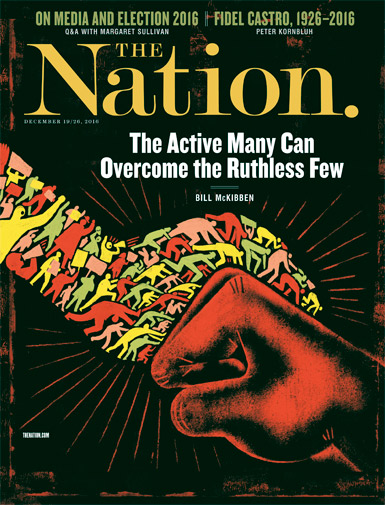As a film student at The University of Michigan, I was exposed to the masters of cinema – Chaplin, Murnau, Kubrick, Lang, etc. There, we were challenged to critique and look beyond the surface to the underlying themes. “Metropolis” is supreme in incorporating intriguing layers of sub-texture and sub-plots.

Moloch Machine
Austrian director Fritz Lang’s German Expressionistic masterpiece helped to develop the science-fiction genre, with innovative imagery from cinematographer Karl Freund, art design by Otto Hunte, Erich Kettelhut, and Karl Vollbrecht and set design by Edgar Ulmer.(set designer for The Phantom of the Opera) It was the last of Lang’s silent films. (Filmsite Movie Review)
Friedrich Christian Anton “Fritz” Lang (December 5, 1890 – August 2, 1976)
“Metropolis” was not just some sci-fi flick from the silent era, it’s a visually-compelling allegory set in the dystopic, 21st-century city of Metropolis and represents a brilliant critique of the repercussions of man vs. machine and the brutality of the never-ending class struggle.
Establishing the tone of the film, this statement is presented following the opening credits.
THE MEDIATOR BETWEEN HEAD AND HANDS MUST BE THE HEART!
“Metropolis” took over 2 years to complete at ten times the budget for the usual Hollywood production of the time and influenced visuals associated with classic films such as; Chaplin’s war against the machines in Modern Times (1936), the mechanical hand of Dr. Strangelove in Stanley Kubrick’s Dr. Strangelove, (1964), or the resemblance between the Maria robot and the droid C-3PO in George Lucas’ Star Wars (1977) trilogy of films, and scenes of Los Angeles in Ridley Scott’s Blade Runner (1982) to name just a few.
This symbolic tale was written by Lang’s wife Thea Von Harbou (from her own novel). Her vision detailed a self-indulgent, futuristic, industrial world built of skyscrapers and bridges incorporating the Art Deco style of the 20s for the 2026 city of Metropolis.
An ultra elite, 1% privileged class of powerful industrialists is juxtaposed with a subterranean environment of the nameless, oppressed and exploited drone-like slave labor class.

City of Metropolis
Made in Germany during the Weimar Period, Metropolis is set in a futuristic urban dystopia and follows the attempts of Freder (Gustav Fröhlich), the wealthy son of the city’s ruler, and Maria (Brigitte Helm), a poor worker, to overcome the vast gulf separating the classes of their city.
Filming took place in 1925 at a cost of approximately five million Reichsmarks. The art direction draws influence from Bauhaus, Cubist, and Futurist design. (Wikipedia)

Fritz Lang directing the workers
As with all great films, “Metropolis” was influenced by the historical events occurring during its time. Centered around the developing Industrial Revolution and depressed economic times, the film also incorporates the rise of fascism in a pre-Hitler Weimar Republic Germany following World War I.
Another influence of the movie’s themes was the rise of the American labor movement and unions during the 1920s due to oppressive working conditions. “Metropolis”, like the Progressive, investigative journalists of the day, took on corrupt politicians and the establishment in an effort to make people aware of the contrast of poverty with the upper-crust classes of the opulent Roaring 20s.

I’m a steadfast believer that understanding history is empowering. “Metropolis” tackles the rise of immigration into the US and exploitation of workers at the beginning of the 20th century along with Capitalists exploiting labor. It deals with the conversation of doing what’s right versus greed and the power of modern science.
The creation of the evil android Maria (Bridgitte Helm) was an abuse of science but that same knowledge powered the city in the sky and could have been used to enrich the lives of the subterranean slaves.

Describing these themes and comparisons in “Metropolis” is like writing a piece for The Nation magazine today. The similarities are frightening like George Orwell’s “1984” or H.G. Well’s “The Time Machine”. It’s dismaying to revisit a film I critiqued back in the ’70s, that was made in the ’20s continues to unfold in the year 2019; only 7 years away from the time of the 2026 Art Deco Metropolis city in the sky.

Does art imitate life or life imitate art? I’m not sure, but in our “reality” tv driven news programming, a low information population, and the “I don’t believe in science” facts, kinda feels like we’re living in the dystopian world of “Metropolis”.
Lest we forget.
THE MEDIATOR BETWEEN HEAD AND HANDS MUST BE THE HEART!
◊
This is a restored version of “Metropolis”
If you’ve never seen it, I highly recommend this viewing experience. But, lasting 2 1/2 hours, prepare to settle in with an extra large bag of popcorn.









Film history.
LikeLiked by 1 person
Absolutely! Still relevant.
LikeLike